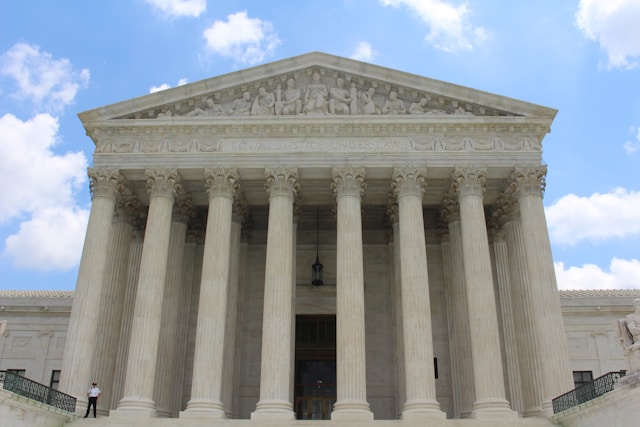In the legal arena of Okemos, mass torts cases have evolved into a significant battleground, igniting fiery debates, stirring controversies, and weaving intricate webs of legal maneuvering that delve into the very essence of civil litigation. With a multitude of plaintiffs and defendants engaged, these legal sagas navigate through labyrinthine legal frameworks in pursuit of justice and reparation for the aggrieved. This article endeavors to dissect the complex terrain of mass torts litigation in Okemos, shedding luminosity on its pivotal facets, formidable challenges, and far-reaching ramifications.
Deciphering Mass Torts Cases
At the epicenter of mass torts litigation lie grievances shared by myriad individuals against common adversaries. These cases typically revolve around product liability, environmental hazards, pharmaceuticals, or other scenarios where a singular action or product inflicts harm on a multitude. In Okemos, such cases have seized attention due to their magnitude and resonance within the community.
Unraveling the Legal Maze
Traversing the legal labyrinth of mass torts litigation demands a nuanced comprehension of both federal and state jurisprudence. In Okemos, plaintiffs often seek recourse under Michigan’s legal scaffold, encompassing statutes, regulations, and judicial precedents governing liability and restitution. Additionally, federal statutes, notably the Class Action Fairness Act (CAFA), may interpose, particularly when cases involve parties spanning multiple states.
Pitfalls and Paradoxes
Mass torts litigation presents an array of pitfalls, spanning from substantiating causation to managing exhaustive discovery procedures. In Okemos, plaintiffs’ legal counsels must amass copious evidence to establish a causal nexus between defendants’ actions or products and the injuries suffered by the plaintiffs. This endeavor frequently entails expert testimonies, scientific exegesis, and voluminous documentation.
Furthermore, orchestrating litigation endeavors amidst a myriad of plaintiffs can prove logistically arduous. Class action litigations may streamline proceedings by amalgamating akin claims, yet they also inject intricacies concerning the representation and apportionment of settlements. In Okemos, legal factions must navigate these convolutions while fervently advocating for their clientele’s best interests.
Principal Players and Stakeholders
In Okemos’ mass torts saga, an array of stakeholders assumes pivotal roles in sculpting outcomes and shaping proceedings. Plaintiffs, marshaled by attorneys versed in mass tort litigation, seek redress and restitution for their afflictions. Defendants, often corporate behemoths or entities, mount defenses against allegations of negligence or malfeasance, frequently deploying battalions of adept legal advocates to safeguard their interests.
Moreover, presiding judges wield substantial authority in adjudicating proceedings, arbitrating disputes, and ensuring equitable resolutions. Court-appointed mediators may also facilitate settlement negotiations, proffering alternative dispute resolution mechanisms to expedite resolutions and curtail litigation expenses.
Recent Revelations and Precedents
Recent revelations in Okemos’ mass torts tapestry have underscored the fluid nature of these litigations and the legal doctrines that underpin them. Landmark verdicts, precedent-setting adjudications, and legislative overhauls delineate the trajectory of mass tort litigation, establishing benchmarks for future cases and influencing the dynamics of settlements.
For instance, a recent appellate court pronouncement in Okemos might have elucidated the threshold of evidence requisite to substantiate liability in cases involving defective medical apparatuses. Such precedents not only reverberate across ongoing litigations but also inform legal stratagems and tactics wielded by both plaintiffs and defendants.
Implications for the Collective
The ramifications of mass torts adjudications in Okemos resonate far beyond the confines of the courtroom, permeating the local community and beyond. Beyond pecuniary indemnification for individual plaintiffs, these litigations frequently catalyze reforms in industrial protocols, product safety paradigms, and regulatory oversight mechanisms. Public consciousness regarding potential perils may burgeon, engendering heightened scrutiny of corporate comportment and culpability.
Furthermore, the resolution of mass torts litigations can catalyze broader discourses concerning justice, parity, and corporate probity. In Okemos, the aftermath of high-profile litigations may galvanize advocacy endeavors, policy imperatives, and grassroots mobilizations aimed at averting analogous harm in the future and holding transgressors accountable.
In Conclusion
As Okemos grapples with the intricate tapestry of mass torts litigations, it becomes manifest that these legal battles transcend individual skirmishes, weaving themselves into the fabric of society and charting the trajectory of civil justice. With stakeholders across the spectrum vying for their prerogatives, the resolution of these litigations bears profound implications for the community, serving as a testament to the potency of law in safeguarding rights, fostering accountability, and seeking reparation for the aggrieved. Exploring mass torts cases in Okemos illuminates the intricate legal landscape surrounding these complex civil disputes, where grievances intertwine with legal intricacies to shape the trajectory of justice.

About the author: Leland D. Bengtson
As a journalist, Leland D. Bengtson dedicated most of his career to law reporting. His greatest satisfaction is to convey legal matters to the public in a language that they can understand. He is active on various platforms and media outlets, writing about common legal issues that people confront every day. While medical malpractice is his strong suit, Leland covers plenty of other topics, including personal injury cases, family law, and other civil and even criminal legal matters.
